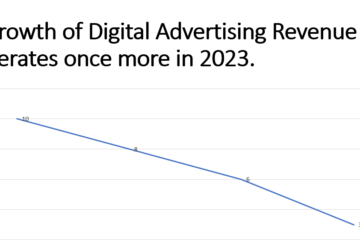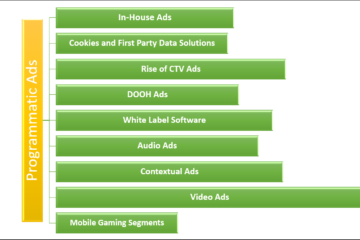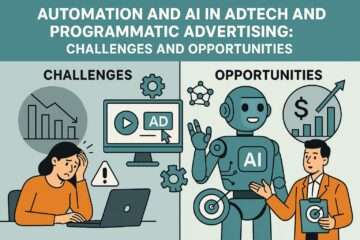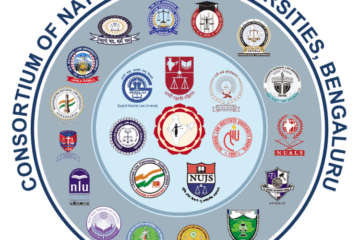
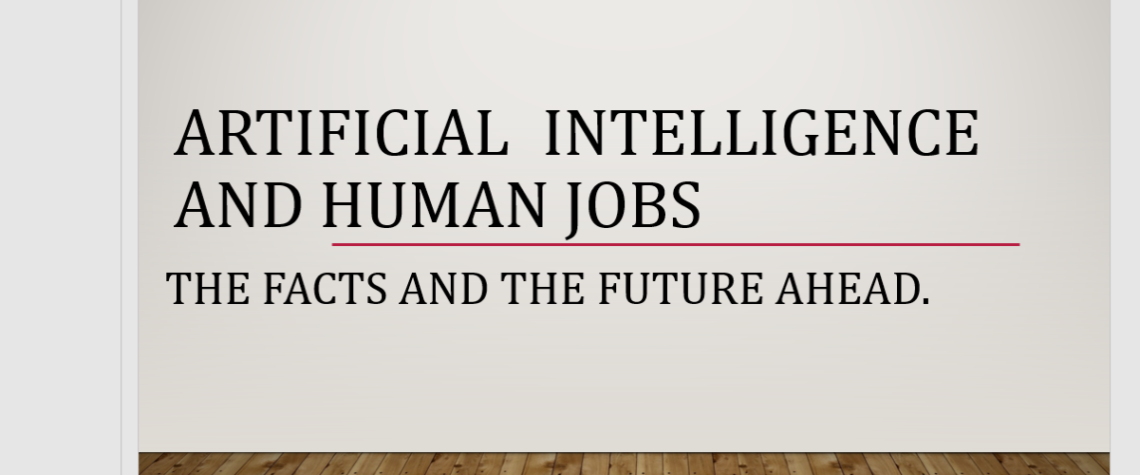
The current scenario of Jobs globally is highly competitive , in every sector. The conditions are changing rapidly after Artificial Intelligence applications are being used by many organizations. It is done for streamlining their work and reduce the manpower expenditure.
We will start with examples of certain examples where AI and Automation is taking over Human Jobs:
- Graphic Designer-Artificial intelligence-generated art is a direct rival to graphic designers, especially since anyone can create this type of artwork. Professional-quality photos can be easily created without artistic expertise thanks to programs like Lensa and DALL-E. Going forward, companies and people might rely less on graphic design services to create visually striking content.
- Content Writer-Artificial intelligence content generators are already able to aid with repeated content creation and concept generation. Artificial intelligence can easily handle simple content marketing chores like crafting short social media posts and formulaic emails. AI may sometimes even generate a first draft of longer-form content, replacing a lot of the tasks performed by human content marketers.
- Travel Advisor-For individualized advice and travel information, travelers no longer need to rely on travel agencies. Travel websites can use AI to enhance user searches and provide recommendations based on past queries. Travelers can now obtain the information they need without using a travel agency thanks to resources like virtual tours and informative movies available online.
- Financial Trader-Although market analysis and decision-making for investors are the responsibility of financial traders, AI can complete this task far more quickly.AI trading systems are still more accurate than human laborers in predicting market changes. AI reduces hiring expenses, thus these two variables together suggest that financial trader jobs may soon become obsolete.
- Factory or Warehouse Worker-AI drives a large number of industrial machines, carrying out several tasks faster and more reliably than humans. Furthermore, AI-powered warehouse robots can collect items and traverse their environment thanks to machine vision, which reduces the need for human warehouse personnel on the part of logistics companies.
- Paralegal-AI drives a large number of industrial machines, carrying out several tasks faster and more reliably than humans. Furthermore, AI-powered warehouse robots can collect items and traverse their environment thanks to machine vision, which reduces the need for human warehouse personnel on the part of logistics companies.
- Research Analyst-AI is capable of doing, at least in part, research-centric jobs such as financial analyst and market research analyst. Large amounts of data can be processed using machine learning, which can also identify patterns and arrange its results into clear graphics. Because of this, AI is perfect for rapidly providing teams with industry insights without requiring human involvement.
- Computer Programmer-Concerns have been expressed regarding whether writing-intensive employment may be replaced by AI thanks to generative AI tools like ChatGPT and Gemini. Programming language is more regimented and direct than human language, which demands far more originality and nuance. Since ChatGPT can already be used to develop code, programming positions at the entry level may soon become automated.
- Car and Truck Driver-Advances in self-driving cars lessen the need for human drivers, which affects those in the ride-sharing and taxi sectors. To give its customers more options, Uber has actually worked with self-driving car startups like Waymo and Aurora, which might put its human drivers in conflict.
- Customer Service Representative-As technologies like chatbots and virtual assistants manage a wider range of consumer inquiries and demands, the customer support role is becoming increasingly automated. Technological developments like self-checkouts also reduce the need for human labor in environments like grocery shops, which lowers the number of jobs in the customer service sector.
<script async src=”https://pagead2.googlesyndication.com/pagead/js/adsbygoogle.js?client=ca-pub-7129364321943967″ crossorigin=”anonymous”></script> <ins class=”adsbygoogle” style=”display:block; text-align:center;” data-ad-layout=”in-article” data-ad-format=”fluid” data-ad-client=”ca-pub-7129364321943967″ data-ad-slot=”9375265244″></ins> <script> (adsbygoogle = window.adsbygoogle || []).push({}); </script>
The Negative Impact of Artificial Intelligence on Employment
AI has the ability to automate a variety of jobs, which might boost productivity and save expenses for companies. But concerns regarding job loss are also raised by this technological advancement. AI has the potential to replace human labor in a number of industries as it develops, which would result in job losses and more economic inequality.
How Many Jobs Will AI Replace By 2030?
The number of jobs that AI will displace by 2030 will vary greatly by industry. Compared to other industries, manufacturing, retail, and transportation are more vulnerable to automation. PwC research suggest that by the early 2030s, up to 30% of employment may be under risk of automation. This percentage, however, varies by industry, with some industries more vulnerable to job relocation than others.
What kind of Human Jobs will be safe from AI in Future?
Jobs requiring human abilities that a robot cannot duplicate, such social skills, emotional intelligence, and interpersonal interactions, are the ones that are least vulnerable to AI and automation. The likelihood that AI will replace workers in a given industry will also be reduced in creative and non-routine fields.
Some of such Jobs which will be comparatively safe from AI is given below:
- Surgeons-Ever allowing an AI to operate on you, would you? Naturally, no.
Surgeons carry out complex and sensitive procedures that call for extraordinary spatial awareness, hand-eye coordination, and pressure-sensitive decision-making. Artificial intelligence (AI) has the potential to support robotic surgery and surgical planning, but it is unlikely to completely replace human surgeons in the operating room due to the precision and adaptability required. - Nurses-In the medical field, nurses are essential because they provide patient care, instruction, and emotional support. It is challenging for AI to replace the combination of clinical expertise, empathy, and communication skills needed for their work. In addition, nurses must respond to changes in a patient’s condition and adjust to their unique needs—tasks that call for human intuition and judgment.
- Therapists-While AI can be a cost-effective alternative for individuals unable to pay for therapy, it cannot replace the human interaction offered by a licensed therapist. Counselors and therapists must establish rapport and trust with their patients in order to comprehend their feelings and offer tailored advice. Artificial intelligence finds it difficult to reproduce the perceptive and compassionate care provided by mental health professionals due to the complexity of human emotions and experiences.
- Physical Jobs-Automation of physical tasks by robotics is still a long way off. Currently, AI won’t affect most physical jobs such as plumbing, construction, janitorial, barbering, and most other jobs.
- Architects-Buildings and environments that are physically sound, aesthetically beautiful, and functional are the responsibility of architects. They must be creative, comprehend intricate engineering concepts, and be able to modify ideas to satisfy the demands of clients, local laws, and environmental restrictions.
Even while AI can help with calculations and design possibilities, it is unlikely that AI will ever completely replace architects because to the creative vision, problem-solving skills, and human touch needed in the field of architecture. - Emergency Responders-Emergency responders have to act fast and decisively in uncertain, high-stress scenarios. Emergency workers, such as firefighters and paramedics, must make snap choices, carry out physically taxing jobs, and offer emotional support to people in need. Artificial intelligence will find it challenging to replace emergency responders given the roles’ physical demands, human touch, and need for adaptability.
AI might still be used in various fields as a supporting tool to enhance human abilities and boost productivity. - Chefs-It is challenging for AI to mimic the creativity, expertise, and taste that go into cooking as an art. Chefs have to adjust to the specific dietary requirements and tastes of their patrons while striking a balance between flavors, textures, and presentation. Although artificial intelligence (AI) has the potential to generate recipes and automate certain processes, human chefs’ culinary knowledge and personal touch are still crucial in the culinary industry.
- Physical Therapists-Patients with chronic diseases or injuries receive individualized treatment programs from physical therapists. They must be observant, have the ability to modify treatment plans in response to patient development, and provide hands-on care. Artificial intelligence will find it difficult to replace the personalized care that human therapists deliver .It is due to the tactile and intuitive nature of physical therapy.
- Research Scientists-For the purpose of expanding knowledge in their discipline, research scientists create experiments, formulate original theories.
AI is not very good at replacing the critical thinking, inventiveness, and creative problem-solving that this job requires. Artificial intelligence (AI) can help with simulations and data analysis, but human researchers are essential to advancing science. - Elementary School Teachers-Teaching young children is more than just passing along information. It entails encouraging creativity, emotional growth, and social skills.
It is difficult for AI to offer the same degree of individualized attention and care. As elementary school instructors since they must modify their lesson plans to accommodate students’ unique learning preferences and needs. - Social workers-Social workers assist people with a range of difficulties as individuals, families, and communities. They must negotiate challenging social circumstances, speak up for their clients, and offer sympathetic assistance. The human touch and understanding required for a profession this complicated. It is also emotionally taxing would be difficult for AI to replace.
How Artificial Intelligence can be prevented from taking over Human Jobs?
It is imperative to prioritize worker reskilling and upskilling. The promotion of a culture of lifelong learning in order to reduce the detrimental effects of AI on employment. This will give people the tools they need to prosper in the AI era. It will also assist them in adjusting to the shifting nature of the labor market.
Governments, academic institutions, and corporations can all contribute to the creation of laws. The initiatives that support individuals whose employment may be in jeopardy and foster lifelong learning.
The Comparative Analysis of Industrial Revolution and the Artificial Intelligence Revolution.
Labor dynamics significantly changed as a result of the Industrial Revolution. When factories both created and replaced a large number of conventional human employment. The changes in employment throughout the Industrial Revolution are explained by a number of historical narratives. The research, even though precise numbers from the time are not easily accessible.
Additionally, the Industrial Revolution brought about new job opportunities in industries like mining, construction, and transportation. For instance, the growth of the British railway network resulted in a sharp rise in the number of jobs .
What we Can Learn From the Industrial Revolution in context to Artificial Intelligence?
A great deal of new work opportunities in factories and allied industries were also created by the Industrial Revolution. Although it also resulted in the displacement of certain old jobs.
- Embrace Change and Adaptability
- Invest in Education and Retraining
- Address Income Inequality
- Encourage Innovation
- Consider the Environmental Impact
- Prepare for Social and Cultural Shifts
We may gain a better understanding of the possible effects of automation and artificial intelligence on our society and economy by drawing lessons from the Industrial Revolution. As we strive to construct a future that optimizes the positive effects of technology breakthroughs while limiting any potential negative effects, this historical viewpoint can help inform our decisions and policies.
The Conclusion
AI will continue to have an impact on the labor market, but it is our responsibility to make sure that workers’ rights are upheld and that the advantages of new technology are shared fairly.
We can build a future that optimizes AI’s positive effects while limiting any potential drawbacks by embracing change and innovation, funding education and retraining programs, addressing income inequality, taking the environment into account, and getting ready for social and cultural changes.



















































